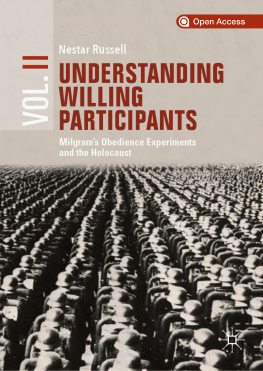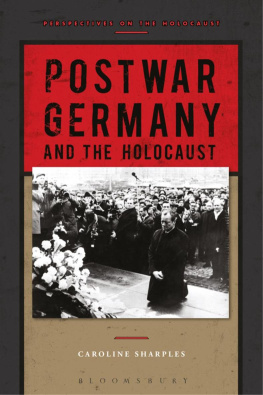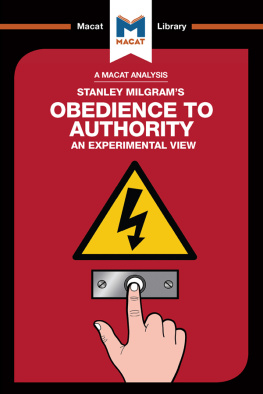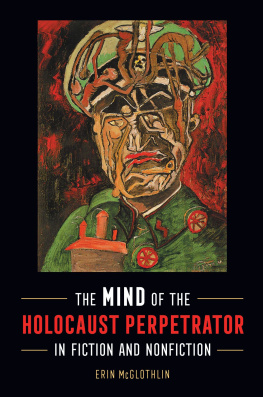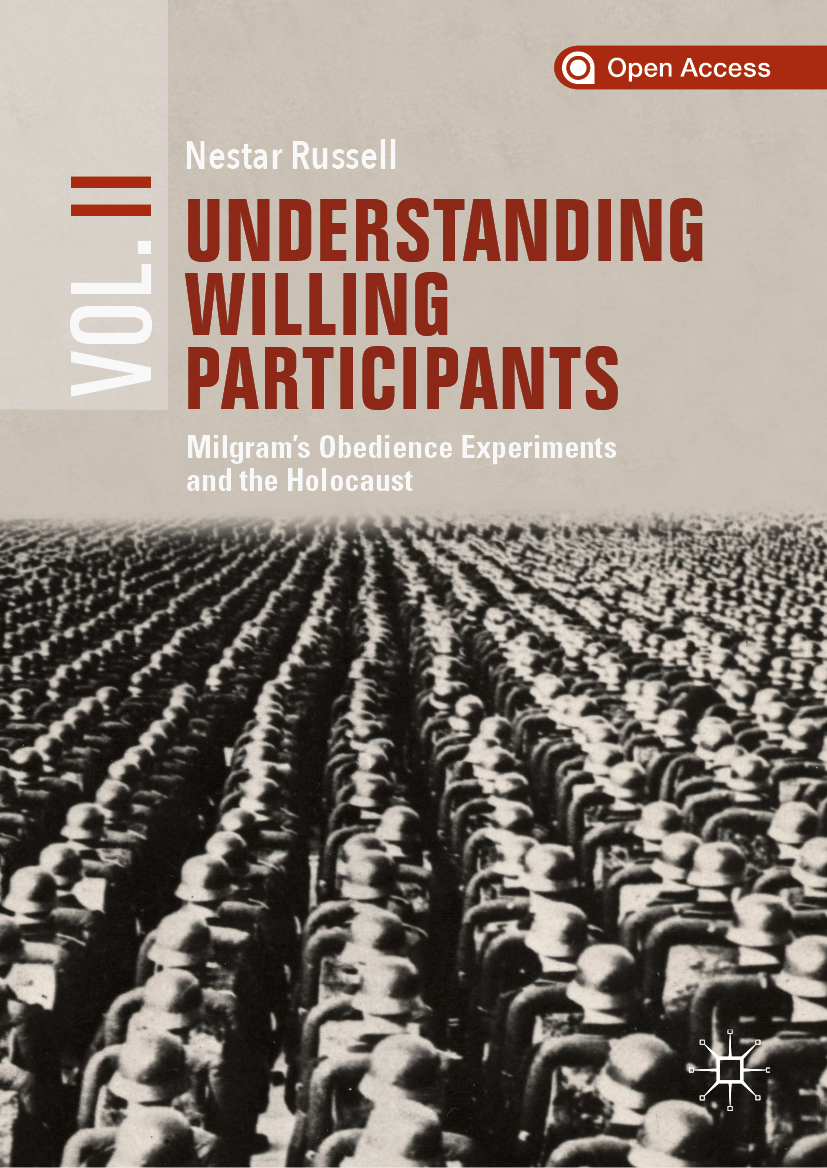Nestar Russell
Understanding Willing Participants, Volume 2 Milgrams Obedience Experiments and the Holocaust
Nestar Russell
University of Calgary, Calgary, AB, Canada
ISBN 978-3-319-97998-4 e-ISBN 978-3-319-97999-1
https://doi.org/10.1007/978-3-319-97999-1
Library of Congress Control Number: 2018950507
This book is an open access publication.
The Editor(s) (if applicable) and The Author(s) 2019

Open Access This book is licensed under the terms of the Creative Commons Attribution 4.0 International License (http://creativecommons.org/licenses/by/4.0/), which permits use, sharing, adaptation, distribution and reproduction in any medium or format, as long as you give appropriate credit to the original author(s) and the source, provide a link to the Creative Commons licence and indicate if changes were made.
The images or other third party material in this book are included in the book's Creative Commons licence, unless indicated otherwise in a credit line to the material. If material is not included in the book's Creative Commons licence and your intended use is not permitted by statutory regulation or exceeds the permitted use, you will need to obtain permission directly from the copyright holder.
The use of general descriptive names, registered names, trademarks, service marks, etc. in this publication does not imply, even in the absence of a specific statement, that such names are exempt from the relevant protective laws and regulations and therefore free for general use.
The publisher, the authors and the editors are safe to assume that the advice and information in this book are believed to be true and accurate at the date of publication. Neither the publisher nor the authors or the editors give a warranty, express or implied, with respect to the material contained herein or for any errors or omissions that may have been made. The publisher remains neutral with regard to jurisdictional claims in published maps and institutional affiliations.
Cover image: Keystone Pictures USA/Alamy Stock Photo
This Palgrave Macmillan imprint is published by the registered company Springer Nature Switzerland AG
The registered company address is: Gewerbestrasse 11, 6330 Cham, Switzerland
For Mum and Dad.
Contents
List of Tables
Table 6.1 The rate of killing at Operation Reinhard extermination camps
Table 9.1 Some destructive organizational processes in modern society
The Author(s) 2019
Nestar Russell Understanding Willing Participants, Volume 2 https://doi.org/10.1007/978-3-319-97999-1_1
1. Introduction to Volume 2The Twisted Road to Auschwitz
Nestar Russell
(1)
University of Calgary, Calgary, AB, Canada
Nestar Russell
Answers are always anywhere anyone asks.
Tony B. Anderson ( Anderson , p. 6)
Schleunes ().
What, in terms of a brief synopsis, were Volume 1 s key arguments and conclusions? At the expense of repeating what I said at the end of Volume 1, this book set out by presenting a resilient conundrum in Holocaust studies . That is, considering that many specialist historians agree that during the Nazi era most Germans were only moderately antisemitic, Extrapolating from this observation, I suggest that if it was possible to delineate Milgrams start-to-finish inventive journey in transforming most of his participants into compliant inflictors of harm on a likeable person, perhaps the insights gained might shed new light into how onlymoderatelyantisemitic Germans so quickly became willing executioners.
So how then was Milgram able to quickly transform most ordinary people into torturers of a likeable person? I argue he did so by deploying formally rational techniques of discovery and organization. To be clear, what exactly did I mean by the term formal rationality ?
Formal Rationality
Max Weber conceives formal rationality as the search for the optimum means to a given endthe one best way to goal achievement. Webers model of a formally rationalized strategy was bureaucracy , an organizational process designed to find the one best way to goal achievement. To construct the one best bureaucratic process , managers break an organizational goal into a variety of discrete tasks, the achievement of which they allocate to different specialist functionaries or bureaucrats . Using a predetermined sequence, each bureaucrat performs their specialist task by following certain rules and regulations , after which the next bureaucrat in the organizational chain performs their specialist task until the goal is achieved.
The specific rules and regulations each bureaucrat follows are determined by what past history has suggested to managers is probably the one best way to goal achievement.
Building on Webers legacy, George Ritzer argues that organizational strategies like bureaucracy have four main components: efficiency , predictability , control , and calculability (E.P.C.C.). Efficiency is the pursuit of a shorter or faster route to goal achievementthe optimal means to a desired end. Predictability is the preference that all variables operate in a standardized and thus foreseeable way, thereby enabling managers to steer an organization toward future beneficial outcomes. Control is greater manipulative command over all factors and therefore the elimination of as many uncertainties as possible. Greater control enables greater predictability (especially as human labor is, over time, replaced by more controllable, predictable, and efficient non-human technologies). Finally, calculability involves the quantification of as many factors as possible. Advances in calculability enable greater measurement, which extends control over more variables and in turn improves the predictability of future outcomes. The greater the degree of formal rationality (advances in E.P.C.C), the greater the chance of discovering the one best way of arriving at organizational goal achievement, whatever it might be.
The one best way of producing motor cars over the past century or so provides an excellent example of advancing E.P.C.C. The production of the first-ever motor cars involved a few skilled engineers and tradespeople laboriously constructing and then attaching handcrafted parts to a stationary vehicle frame. This technique was not only slow (inefficient) but also unpredictable as the variable, non-standardized car parts ensured an equally variable end-product. Furthermore, because the engineers and tradespeoples skills were rare, they could resist managements coercive attempts to make them work faster by, for example, threatening to quit or go on strike (uncontrollable). Because control and predictability were low, management struggled to calculate daily, monthly, and annual production outputs. Thus, E.P.C.C. in relation to the one best way of manufacturing motor vehicles was low.
Henry Ford then invented the inherently bureaucratic motor car assembly-line production process. In Fords factory, a line of vehicle frames moved along a conveyor belt. The frames moved past many specialist assembly workers, each of whom sequentially attached a standardized car part. At the end of the moving line, a constant flow of assembled vehicles emerged. Fords moving line caused production efficiency to greatly increase. The standardized car parts meant identical end products, and thus predictability also increased. The set speed of the moving line enabled Ford to quantify daily, monthly, and annual output, thus increasing calculability . But it was control perhaps that advanced the most. If one worker failed to keep up with the speed of the moving line, to the frustration of other workers and management alike, a bottleneck might form. Therefore, the set speed of the moving line in conjunction with a fear of falling behind pushed workers to perform their tasks faster than they probably would have on their own accord. The assembly line is therefore an early example of a more efficient non-human technology capable of imposing greater workforce controlall felt pushed by an unsympathetic machine into working quickly. And if workers resisted the set speed of Fords moving line (by quitting or going on strike), because they were unskilled, he could more easily replace them. Fords one best way of producing motor vehicles increased all four components of a formally rational system. It transpires Ford developed this revolutionary system by relying on his intuitive feel of what might work best, his previous life experiences, and his real-time observations of the emerging production process. Thus, it was

